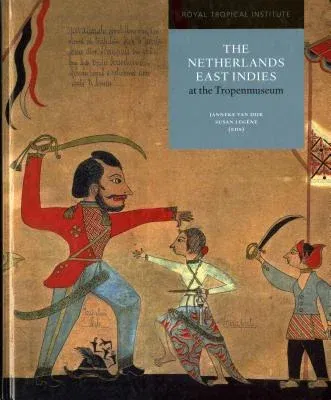The Netherlands East Indies at the Tropenmuseum: A Colonial HistoryHardcover, 1 August 2015

Qty
1
Turbo
Ships in 2 - 3 days
In Stock
Free Delivery
Cash on Delivery
15 Days
Free Returns
Secure Checkout

Print Length
200 pages
Language
English
Publisher
LM Publishers
Date Published
1 Aug 2015
ISBN-10
9068327518
ISBN-13
9789068327519
Description
Product Details
Book Format:
Hardcover
Country of Origin:
US
Date Published:
1 August 2015
Dimensions:
26.67 x
22.1 x
1.78 cm
ISBN-10:
9068327518
ISBN-13:
9789068327519
Language:
English
Location:
Seattle
Pages:
200
Publisher:
Weight:
979.76 gm